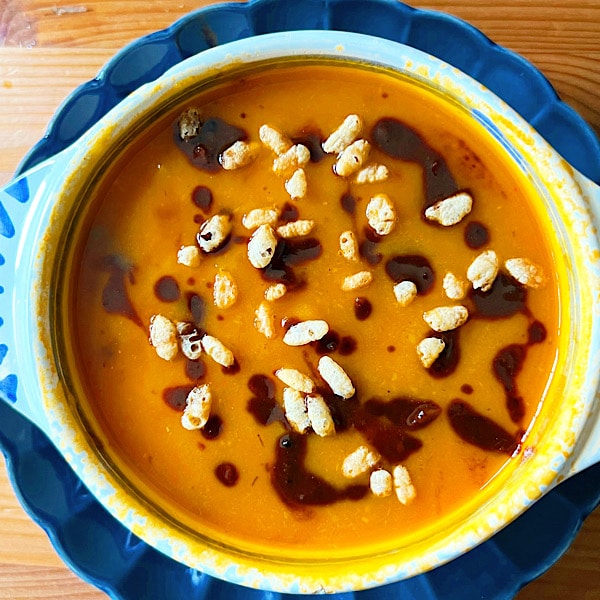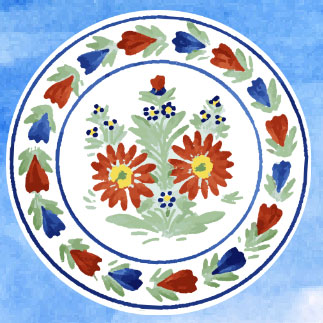I grew up on this custard. My grandmother would serve it often: on its own or with pound cake and sometimes she’d bake it in small, glass custard cups until set, then top it with a sprinkling of nutmeg and a dollop of meringue that she’d broil until just set. My best memories of Grandmother’s Custard, though, are when she’d make a big batch and bring it over when I was sick. The whole jar was mine to spoon (or drink!) and the cool, sweet taste of her love soothed many a sore throat and hot, feverish body.
I don’t prepare custard as often as my grandmother did (though I may start, now that I have a bona fide CUSTARD CROCK), but I have made this recipe often enough to have put my own spin on it. First off, I’ve given a sugar range for times when I want something that’s a tad less sweet, and added a pinch of salt because I believe just a hint of salt brings out the best in sweet recipes. Second, I’ve adapted it to the French crème anglaise method of cooking custard (Grandmother just cooked everything together in a double boiler) which is faster and more reliable. And finally, I’ve made it my go-to vanilla ice cream recipe. The texture’s perfect…all you have to do is pour the cooled custard into an ice cream maker, and churn. (Note: When making ice cream, use the full amount of sugar.)
4 eggs
¾ cup (150 g.) to 1 cup (200 g) sugar
pinch salt
1 quart (1 liter) milk, preferably whole
2 tsp.(10 ml.) vanilla extract or ½ vanilla bean, seeds scraped from inside
Whisk together the eggs, sugar, and salt in a large bowl until the sugar has dissolved and the mixture is smooth.
Have ready a fine-meshed strainer and a large bowl.
Bring the milk and the scraped vanilla bean and seeds, if using, to a rolling boil in a large saucepan. Whisk the milk into the egg mixture little by little until all the milk is incorporated. Return the custard to the saucepan, and cook over medium-low heat, stirring constantly, until thick enough to coat the back of a spatula or wooden spoon or an instant read thermometer reaches 180˚ – 185˚F (80-85˚C). (Note, if you’re worried at all about the custard curdling, cook it in a double boiler over simmering but not boiling water instead.)
Once the custard has thickened, strain it immediately into the clean bowl. Stir in the vanilla extract, if using, and cool.



Love this recipe MM! Going to try to convince my lovely boyfriend to make it for me! Oh how I love custard!
I hate to admit I ate/drank a whole quart all by myself in the space of 2 days! Had to make another batch for strawberry ice cream…
So I have a question. I made this, and it turned out delicious (of course), but I basically had to stop stirring for a little bit to get it hot enough. This often happens to me when I want to make something that is custardy – am I a too vigorous stirrer? I worry that it’s not as smooth as it could be if I had been more patient…. Delicious with fresh raspberries – it’s practically breakfast!
If your custard doesn’t curdle or start to boil, then whatever you’re doing is just right. The straining step will take out any bits of curdled egg so smoothness should not be a problem. This custard is thicker than the ones made with just egg yolks — which I like, personally.
How long and what temperature should I bake the custard if I want to serve it baked in glass bowls with nutmeg?
Hi Laura, you can bake it 35 to 45 minutes at 350˚F. Place the custard cups in a water bath (a pan filled with hot water) to prevent the custard from curdling while baking. The baked custards should be jiggly, but firm.
Hi Laura, I would like to make it chocolate flavored, how much sugar and cocoa should I add?
So sorry, I think you’d have to look for another recipe that specifically calls for cocoa. I’m not sure the exact quantities.